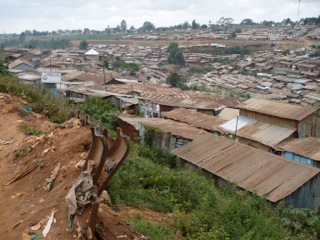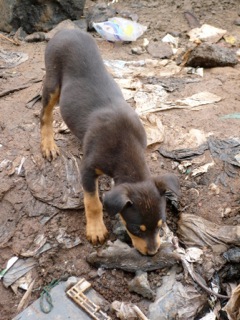Dr Jo Halliday - Rodents provide clues as to causes of human illness in African slums
Published: 16 October 2013
One in five rodents in a Kenyan slum carries a disease that causes fever and illness in humans, a study has found. The study, led by Dr Jo Halliday, discovered a significant percentage of the rats and mice in Nairobi’s Kibera slum – one the largest in the world – were carrying Leptospira bacteria in their kidneys. The bacteria can be passed to humans through contact with urine causing the disease leptospirosis.
One in five rodents in a Kenyan slum carries a disease that causes fever and illness in humans, a study has found.
Scientists discovered a significant percentage of the rats and mice in Nairobi’s Kibera slum – one the largest in the world – were carrying Leptospira bacteria in their kidneys.
The bacteria can be passed to humans through contact with urine causing the disease leptospirosis which in mild forms results in fever, headache and nausea, or in serious cases can cause organ damage – when it is more commonly known as Weil’s disease.
 The study by scientists at the University of Glasgow, working with investigators from the Kenya Medical Research Institute, the US Centers for Disease Control and National Museums of Kenya, also found that most residents in Kibera spot at least one rat in their house every day, according to a questionnaire survey of 100 households.
The study by scientists at the University of Glasgow, working with investigators from the Kenya Medical Research Institute, the US Centers for Disease Control and National Museums of Kenya, also found that most residents in Kibera spot at least one rat in their house every day, according to a questionnaire survey of 100 households.
Dr Jo Halliday, of the Institute of Biodiversity, Animal Health and Comparative Medicine and Boyd Orr Centre, who led the study said: “Little is known about how much illness is caused globally by leptospirosis. It is an under-reported disease due to its non-specific symptoms.
“However, many instances of unspecified fever in tropical regions may be due to this bacteria which is recognized as a re-emerging infection globally as a consequence of the growth of slums.
“Our study really emphasises the need to quantify the burden of human illness not only in places like Kibera, but elsewhere, to raise awareness of this neglected disease amongst health care professionals, and to develop effective disease control programs.”
A total of 237 rodents were trapped by the researchers – 43 rats and 194 mice – from 948 trap placements in 270 households. Mice were more likely than rats to carry the bacteria.
 Around 60% of households in and around Kibera reported seeing groups of five or more rodents in their house every day while 66% reported weekly or daily sightings of fresh droppings in their house.
Around 60% of households in and around Kibera reported seeing groups of five or more rodents in their house every day while 66% reported weekly or daily sightings of fresh droppings in their house.
Official census figures put the population of Kibera at around 200,000, though some sources claim there are many more people living in the neighbourhood situated three miles south of Nairobi city centre. Poor infrastructure, open sewers and refuse problems contribute to high levels of disease and illness in the human population of Kibera.
Cases of fever are common in Kibera, with an average of 2.7 episodes per person, per year for children under the age of five, and 0.58 episodes for people over five years of age. How much of this illness is due to leptospirosis is unknown.
The study, published in the American Journal of Tropical Medicine and Hygiene, was funded by the Wellcome Trust and Biotechnology and Biological Sciences Research Council.
First published: 16 October 2013

